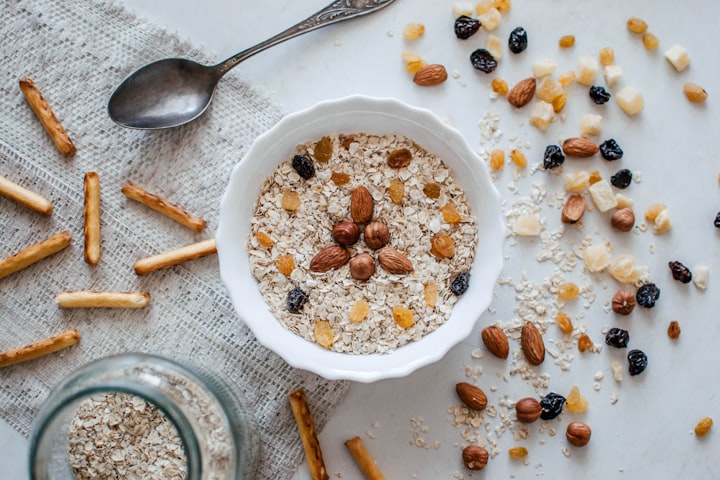Let's Talk About Cereals
The basis of human nutrition

The pattern of healthy eating has been synthesized by nutritionists in the form of a pyramid, in which each food group finds its place closer to the top or more to the base, depending on the importance in the diet of people who want to maintain their health for a long time.
At the base of this pyramid is CEREALS, which we need in large quantities to be healthy. However, according to studies, the current consumption of food from cereals is much lower than would be necessary.
Let's see why cereals are so important in human nutrition:
The edible part of cereals is the seeds or fruits of these plants. Cereal grains are made up of several layers, which cover a core. This core (germ) contains unsaturated fats, proteins, iron, class B vitamins.
It is surrounded by endosperm, a layer of fat fixed in a protein matrix. This is followed by a layer of indigestible fiber, but also iron, thiamine, niacin, riboflavin, and even protein. The outer layer has the role of protecting the seed.
The term "cereal" is derived from the Roman name of the grain-ruling goddess, Ceres. Everyone knows at least a few grains - wheat, corn, rice, barley, oats, rye - and the foods that are made from them: flour, bread, pasta, breakfast cereal flakes, and so on.
When primitive people began to introduce cereals into their diet, they ate whole or ground grains, without losing any of the composition of the plant.
Today, cereals are processed and, unfortunately, we end up consuming only certain parts of the plant, and not necessarily the most nutritious ones. White wheat flour and husked rice are not the best options for a healthy diet. In modern cooking techniques, iron, vitamins, calcium are added.
Because they are high in carbohydrates and low in fat, cereals are the ideal fuel for muscle. When 50% of energy comes from carbohydrates, muscle glycogen stores are maintained at full capacity, so we will be prepared to cope with the effort.
Recently, cereals have begun to regain their popularity and place in the diet of modern man, due to the fact that many researchers have drawn attention to their role in preventing disease.
Dietary fiber found in cereals prevents constipation and the risk of colon cancer. They also have the ability to lower cholesterol and blood sugar levels, which make a decisive contribution to the control of cardiovascular disease and diabetes.
Refined cereal products have a lot of fiber removed, so we will not benefit from their effects. Therefore, it is good to choose wholemeal bakery products.
Cereals are an important source of protein.
They provide about half of the world's protein needs. In developed countries, more than 90% of cereals are used as animal feed. None of the cereals provide all the essential amino acids, but combining them with other plant sources of protein (peas or beans) can be a complete source of protein.
The fact that cereals are at the base of the food pyramid means two things: first, it shows us the importance of this food group, and second, it indicates that in our daily diet, the number of cereals must be well represented.
It is recommended to consume 4-5 servings of cereal daily. A "portion" can mean a slice of bread, 30 g of flakes for breakfast, a cup of rice, etc. Therefore, it is not so difficult to ensure the optimal amount of grain.
Even in a weight loss diet, eating 1-2 slices of bread is not a tragedy, on the contrary, a benefit, if we choose wholemeal bread.
Whole grains have been the staple food of mankind for millennia.
Cereals contain on average 75% carbohydrates, in the form of starch, 10-15% protein, 2% fat, being rich in fiber, vitamins, and minerals. Regular consumption of cereal products can cover the need for B vitamins. Whole protein is found in cereal germs.
Unfortunately, because it spoils the fastest, the germs are mostly removed in the refining process. In order to obtain white flour, bran, rich in B vitamins, is removed.
Lacking fiber, refined flour can cause constipation. In contrast, whole grains are rich in nutrients, are one of the main sources of energy for the body, and should not be missing from the diet of a healthy person.
Whole or unrefined cereals include wheat, millet, brown rice, barley, rye, and buckwheat. One of the best indicators of the degree of refining of cereals is the color - the darker the color, the less refined and healthier for the body. Here is a brief overview of some cereals:
Wheat - contains zinc, iron, calcium, magnesium, vitamins B and E and its germination increases its concentration tens of times. But semolina grains made from refined wheat do not contain any valuable substance and are also difficult to digest.
Buckwheat - contains iron, calcium, phosphorus, iodine, B vitamins, etc. It can replace meat in the diet.
Millet - is rich in magnesium and iron. Children who have been treated with antibiotics are advised to eat millet porridge as often as possible. Some consider millet to be a difficult product to assimilate, but this shortcoming can be remedied by using fats (extra virgin olive oil, butter, cream).
Rice - rice husk is a treasure trove of B vitamins and many other trace elements. The rice in our stores is peeled and germinated, and the remaining core is nutrient-free.
Barley - rich in vitamin B5, improves intestinal peristalsis, eliminates radionuclides, herbicide residues, fertilizers, and toxins accumulated in the body.
Oats - the richest supplier of calcium of all grains. It has the ideal ratio between carbohydrates, proteins, fats, and B vitamins, it helps to lower cholesterol. It has a general fortifying action, so it is recommended for patients with tuberculosis, those with lung disease, or recovering from surgery.
Corn - the only supplier of gold, a substance necessary for the normal functioning of the brain.
The role of whole grains for the proper functioning of the heart.
A study of a sample of menopausal women found that by consuming at least a portion of whole grains daily, the risk of developing cardiovascular disease is reduced by 30%.
The explanation is that these diseases are usually caused by high cholesterol, and whole grains play an important role in reducing it.
Whole grains help us maintain our figure.
Plump people tend to have drastic diets. As a result, the body's energy levels are much lower. That is why it is important to include whole grains in your diet.
Their digestion process is longer, therefore, the feeling of satiety appears faster and so we will eat less. Whole grains do not contain saturated fats, a factor that we must take into account during the diet.
Whole grains help prevent cancer.
Due to the fact that whole grains have a high content of insoluble fiber, they significantly reduce the risk of colon cancer and, in general, of malignant diseases of the digestive system. They also prevent kidney and breast cancer. It is advisable to eat whole grains 3-4 times a week.
How to prepare porridge, keeping the valuable substances in cereals.
Unlike the usual way of cooking porridge with milk, we suggest a more unusual way to prepare pancakes. The porridge with vegetables and spices is delicious and fragrant, very popular with both adults and children. In addition, it has a number of nutritional benefits:
The nutritional value of the groats is preserved by reducing the heat processing time. This is possible by soaking the groats 3-4 hours before preparing the porridge.
Adding vegetables means an intake of vitamins and minerals. Onions and carrots combine perfectly with all croutons. For diversity, buckwheat can be prepared with onions and zucchini, and millet - with onions and red bell peppers.
Spices and greens give the food a special aroma and taste, as well as an increase in trace elements and vitamins. Spices used separately or in combination to make the porridge tastier: bay leaves, black pepper, white pepper, coriander, dill seeds, dill, and dried parsley, basil, marjoram, oregano, thyme.
Unrefined and heat-processed oil adds vitamin E, carotenoids, and polyunsaturated fatty acids.
Ingredients needed for a portion of porridge:
• 3 tablespoons of groats;
• a small onion; a small carrot;
• a quarter of a bay leaf;
• spices: basil, oregano, thyme, etc .;
• greens: dill, parsley, celery;
• crude oil (corn, sunflower or olive);
• sea salt.
How to proceed:
Wash the crumbs well. Put them in an enamel or glass bowl and pour water over them. Let them soak overnight. In the morning they swelled, absorbing most of the water.
- Grain-water ratio
- Wheat, buckwheat, oats - 1/2
- Millet, rice, corn - 1/3
- Barley - 1/4
Finely chop an onion and grate a carrot. Boil about 100 ml of water. When the water boils, add the onion and carrot. Let the vegetables simmer for 2-3 minutes.
Add the croutons together with the water in which they were soaked and the bay leaf. Let it boil for another 2-3 minutes.
After you put out the fire, add the spices and leave the porridge under the lid for about 5-10 minutes. Put salt and oil to taste, directly on the plate. For good digestion, chew the porridge thoroughly and for a long time.





Comments
There are no comments for this story
Be the first to respond and start the conversation.